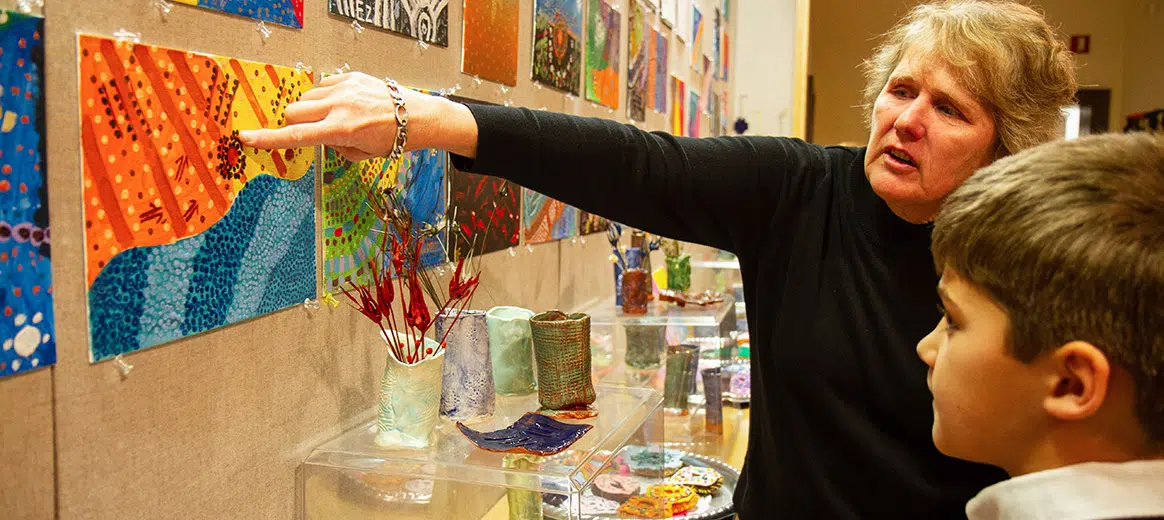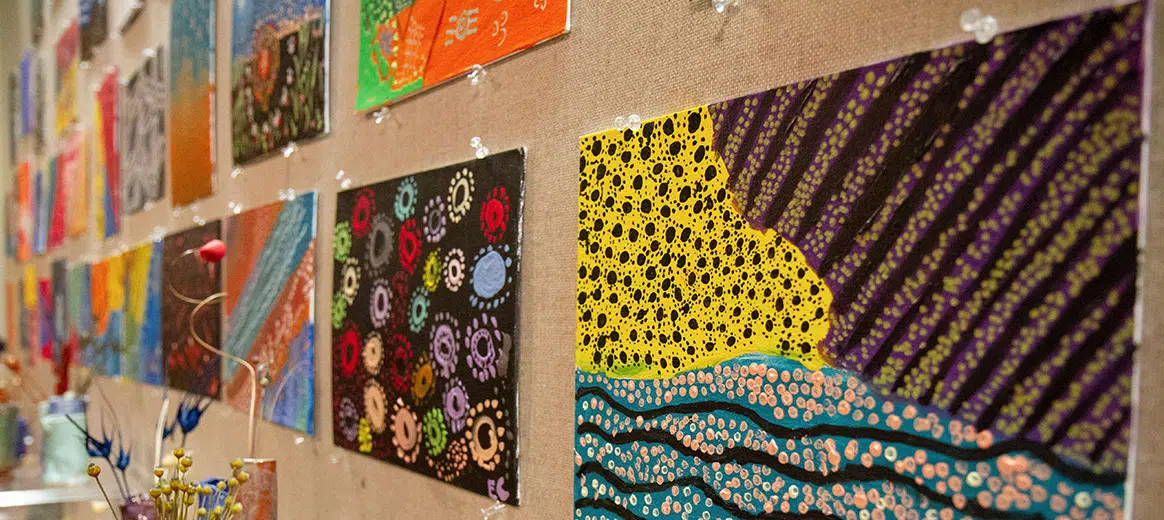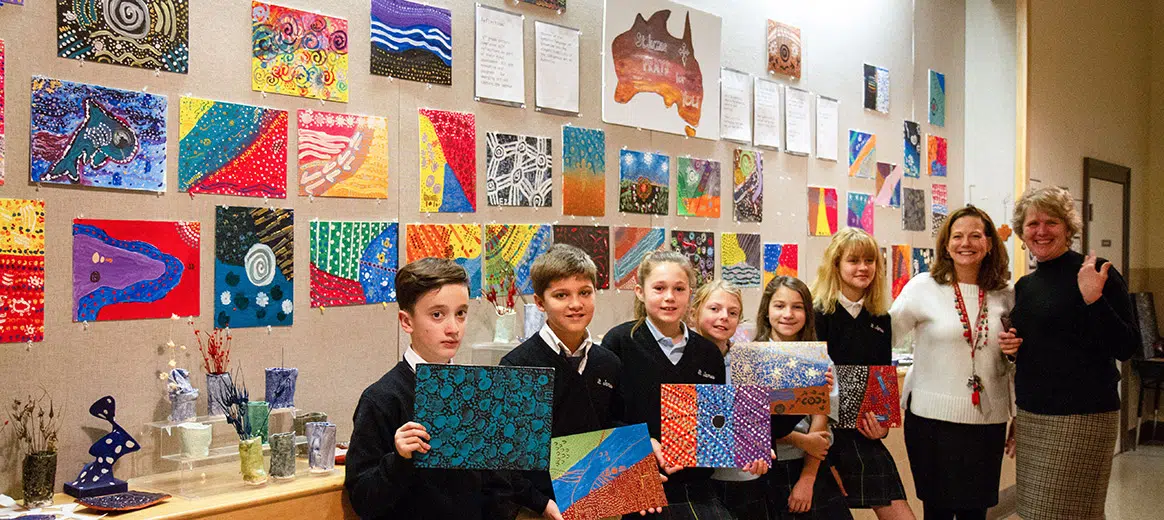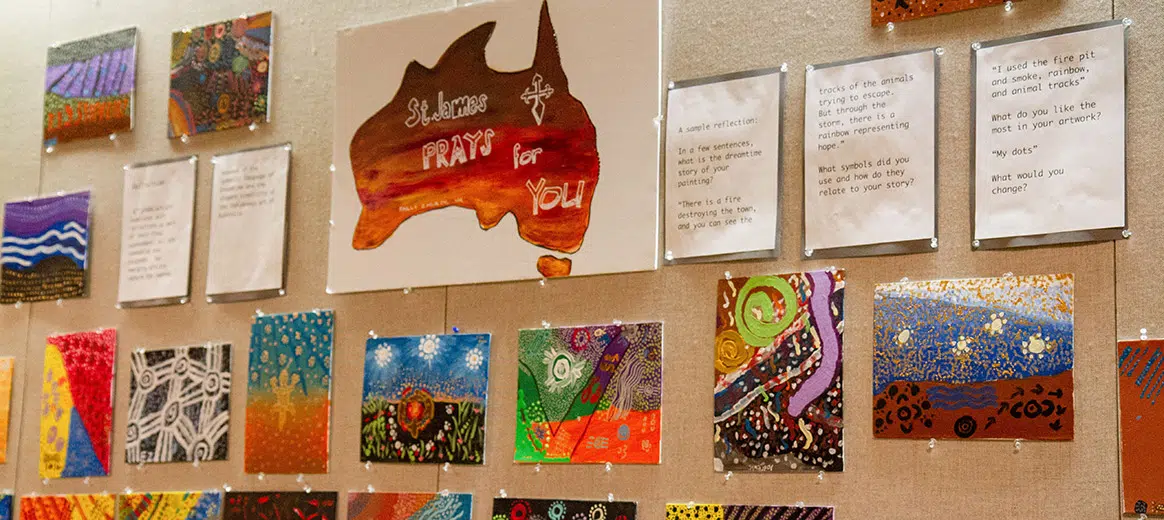UPDATED
As the world watched news accounts of Australian bushfires engulfing more than 12 million acres of land from the end of 2019 into early 2020, sixth-graders at St. James School in Falls Church were studying aboriginal Australians in social studies class with teacher Maureen St. Pierre, and creating pre-language symbolic art with teacher Daniela Shumate.
In a collaborative project, students painted symbols such as dots, campfires, swirls and rainbows to tell a story, and explained their work on the back of the canvas during an assignment in January.
“Before there was written language, there was art and that is how they communicated,” said St. Pierre. “In our art journey, we explore the pattern of art, beginning with cave art and then to symbols and then to written words as students learn about visual literacy.”
This art form, called Dreamtime, is important to the aboriginal people. According to aboriginalart.com, “It gives a social and spiritual base and links them to their cultural heritage.”
“The students learned what is sacred to the aboriginal artists and to respect the traditions they follow,” said Shumate. “They then integrated this art form with their own faith.”
Student Anthony Clarke painted his interpretation of the birth of Jesus in the aboriginal style. He used a combination of dot painting, large clusters of dots and lines to represent a crowded Bethlehem, horseshoe shapes for people (three grouped together for the wise men, and two together for Mary and Joseph, and a larger group as the shepherds) and a circle with six smaller circles surrounding it to represent a star.
“This art is so sophisticated and not easy,” said Shumate.
Nathanael Adamson used repetition of large and small dots to represent rain, “A connection that wasn’t intended, but beautiful,” said Shumate, “since the people of Australia were praying for rain during that time.”
“Hope” is the title of Caitlin Musolino’s piece, which features symbols for a campsite and smoke in the center, people on either side, animal tracks moving toward the edges of the canvas, and a rainbow across the top — all narrative elements that tell the story of a town burning, with the rainbow representing hope after the fire.
“We are so lucky that the kids are interested in learning, and we can bridge artwork with what we are learning in social studies,” said St. Pierre. “The hands-on projects make it enjoyable and enhances their learning environment.”
“Daniela is always reaching out to the other teachers for crossovers,” said Sister of the Immaculate Heart of Mary Mary Sue Carwile, principal. “The projects give the students a sense of the world beyond themselves, and each day starts with prayers for not only Australians during that time, but all people suffering from natural disasters.”
The teachers thought the project was so poignant and timely, they reached out to the Australian Embassy in Washington and shared photos of the exhibit with them. They also offered to send the canvases to be displayed on a temporary basis. The embassy had to decline, due to a current construction project and space issue, however, their representative responded via email, “Thank you from the bottom of my heart. Your art is wonderful and will be passed on to others who need inspiration.” The embassy will send each artist a poster as a thank you.
“It’s really cool that the embassy gets to know we care, and are supporting them,” said Jessie Schreuder, a recent transfer student from Uruguay.
“Art is healing, and prayer is powerful,” said Shumate.





